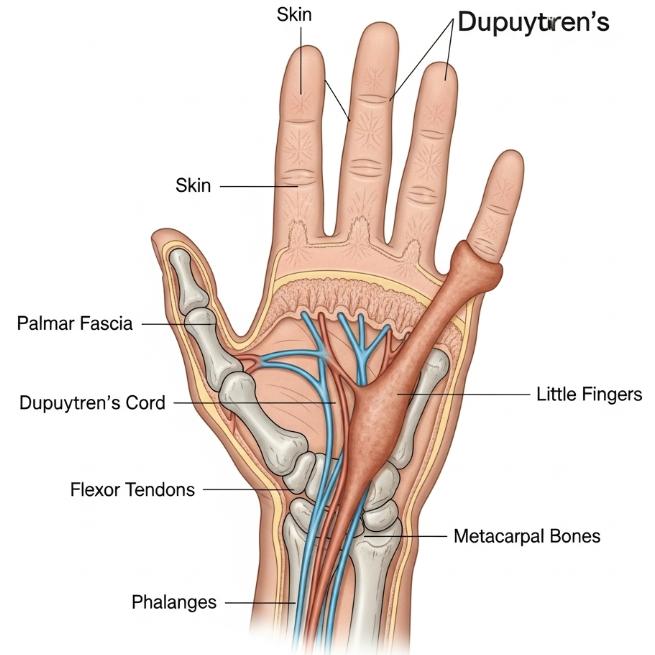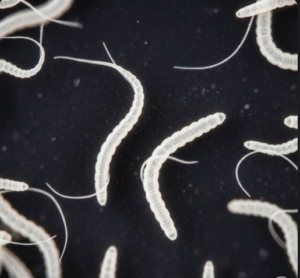Overview
Dupuytren’s Contracture is a hand condition characterized by the progressive thickening and tightening of the connective tissue in the palm, leading to bent fingers. In South Korea, the condition is less common than in Western countries but is increasingly recognized among older adults. Early intervention is important to maintain hand function and prevent permanent finger deformities.
What is Dupuytren’s Contracture?
Dupuytren’s Contracture is a fibroproliferative disorder affecting the palmar fascia, causing nodules, cords, and contractures that limit finger extension. It most commonly affects the ring and little fingers and is more prevalent in men over 50 years of age. While painless in early stages, functional impairment becomes significant as the disease progresses.
Symptoms
Key signs and symptoms include:
- Nodules or lumps in the palm
- Thickened cords under the skin
- Fingers gradually bending toward the palm
- Difficulty straightening affected fingers
- Impaired grip and hand function
- Occasional mild discomfort or tightness
Causes
The exact cause is unknown, but factors involved include:
- Genetic predisposition and family history
- Abnormal fibroblast activity leading to collagen overproduction
- Microtrauma to the hand over time
- Age-related changes in connective tissue
Risk Factors
Risk factors include:
- Male gender, particularly over 50
- European ancestry (less common in East Asia, including Korea)
- Family history of Dupuytren’s Contracture
- Smoking and excessive alcohol use
- Diabetes or epilepsy (medication-related association)
Complications
If untreated, the condition may lead to:
- Permanent finger contractures
- Loss of hand dexterity and grip strength
- Difficulty performing daily tasks such as writing or holding objects
- Psychological impact due to functional limitations
Prevention
While there is no guaranteed prevention, measures include:
- Regular hand exercises to maintain flexibility
- Avoiding repetitive trauma or excessive strain on the hands
- Managing risk factors like diabetes and alcohol consumption
Treatment Options in Korea
Treatment in South Korea aims to relieve contracture, restore finger movement, and prevent recurrence:
Non-Surgical Management:
- Physical therapy and hand exercises
- Splinting to maintain finger extension in early stages
- Collagenase injections to dissolve fibrous cords
Surgical Intervention:
- Fasciectomy (removal of thickened fascia) for severe contractures
- Needle aponeurotomy (minimally invasive procedure)
- Postoperative rehabilitation to restore function
Specialized Care:
- Orthopedic and hand surgery departments in Korean hospitals offer comprehensive care
- Multidisciplinary rehabilitation, including physiotherapy and occupational therapy, ensures optimal recovery
Early diagnosis and timely intervention in Korea help maintain hand function, minimize pain, and improve quality of life for patients with Dupuytren’s Contracture.













